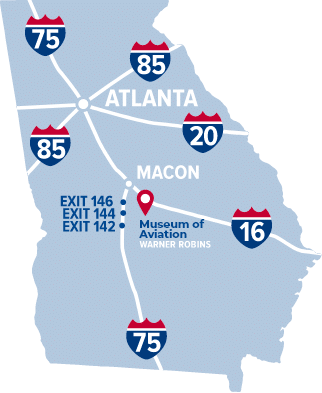Primary trainers represented the first of three stages of military flight training: primary, basic, and advanced. Prior to 1939, the Air Corps relied entirely on biplanes as primary trainers, but in 1940 it ordered a small number of Ryan low-wing civilian trainers and designated them at PT-16s. They were so successful that the Air Corps then ordered large numbers of improved versions, among them the PT-22. By the time production was completed in 1942, 1,023 PT-22s had been delivered. Twenty-five additional trainers, ordered for the Netherlands, were taken over by the Air Corps in 1942 and designated as PT-22As.
During WWII, Robins AFB served as a repair and supply depot for all PT-22s serving in the Southeast. The PT-22 on display was delivered to the AAF in July 1942 and delivered to the Tucson Army Air Field, Arizona and later served at Minter Army Air Field, California. It was declared surplus in September 1944. The Museum acquired this aircraft in 1986 through an exchange after an extensive restoration.











